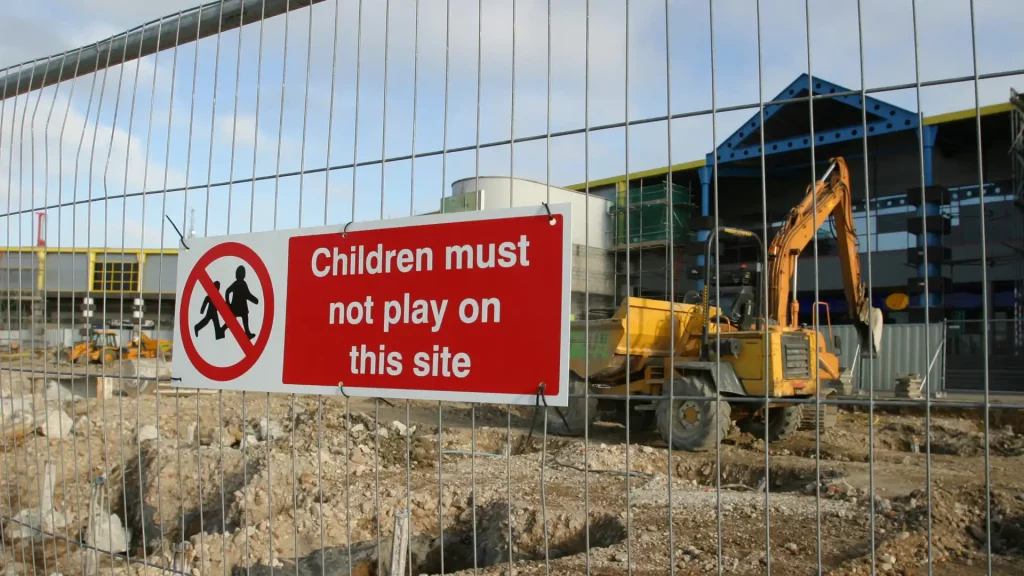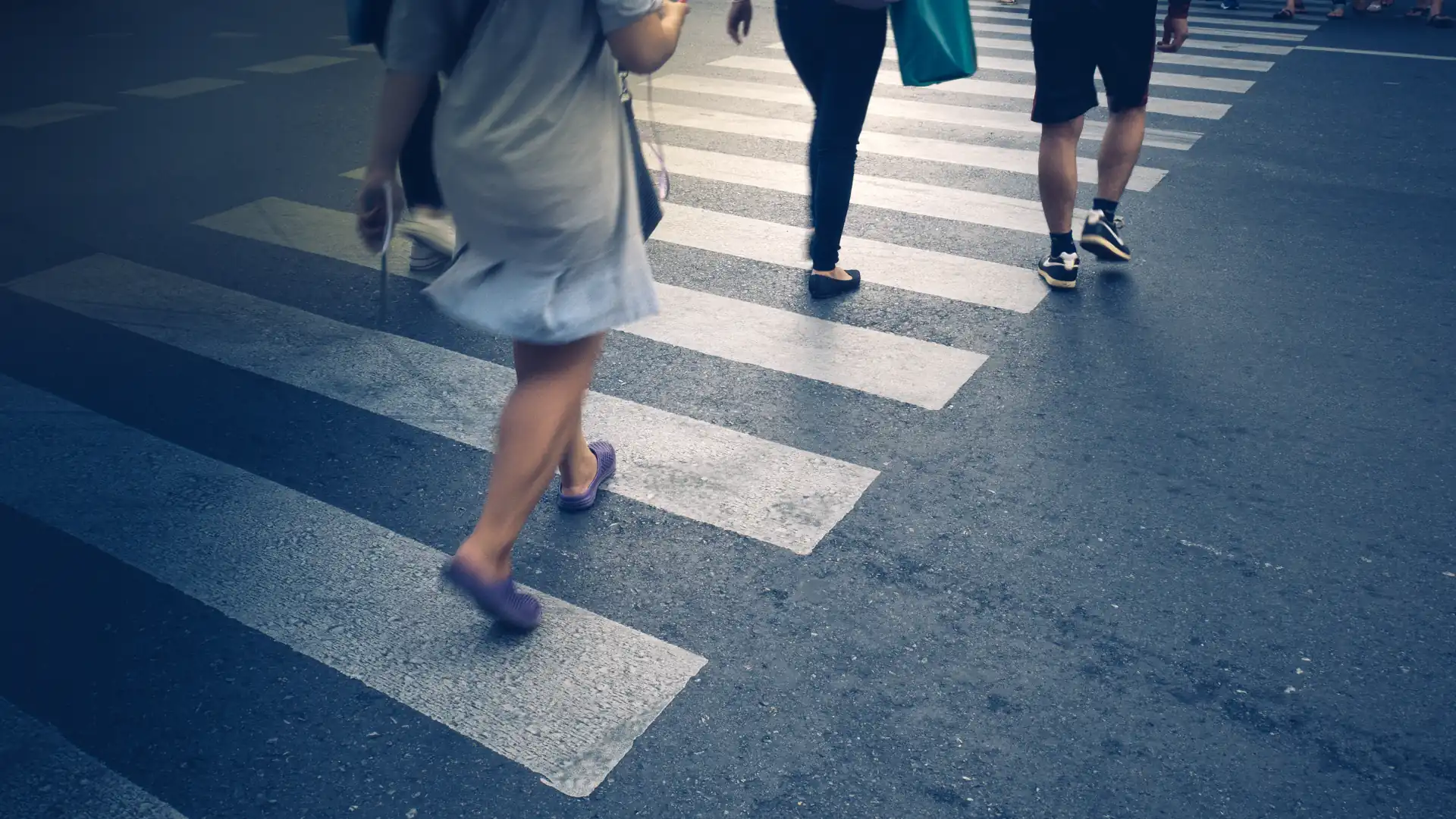By their very nature, construction sites pose inherent risks and challenges, demanding meticulous attention to safety protocols. Despite the stringent Workplace Health & Safety regulations and intensive training, the coexistence of pedestrians and heavy machinery remains a constant concern.
As infrastructure service experts, we have created a comprehensive guide that delves into the nuances of construction site pedestrian safety. We’ll explore the biggest risks to construction site safety and effective measures to minimise risks and create a secure working environment.
Construction Errors that Pose a Risk to Pedestrians
Construction sites, inherently hazardous for workers, also present a substantial danger to unsuspecting pedestrians. The absence of safety procedures amplifies the risk, making it imperative for construction companies to strictly adhere to safety standards. Numerous critical aspects are often overlooked, elevating the potential for preventable injuries and accidents.
Inadequate Signage
The cacophony of a construction site demands a pedestrian’s heightened attention. From moving vehicles to stoplights, multiple elements vie for focus. An unmarked site or poorly visible warning signs can lead pedestrians to inadvertently wander into dangerous areas. Strategic placement of eye-catching, clear warning signs is essential to mitigate this risk. Enhancing visibility fosters awareness and empowers pedestrians to make informed decisions for their safety.
Insufficient Barricades and Barriers
Construction sites encompass an array of hazards, from excessive noise to heavy equipment and hazardous materials. Solid and secure barricades and barriers act as the first line of defence, preventing unauthorised access to high-risk areas. This proactive measure not only safeguards pedestrians but also underscores the commitment of construction site owners to public safety.
Loose Tools and Materials
Inadequate training and safety equipment for workers may result in tools being haphazardly strewn or left in precarious positions. Even minor negligence, such as tools hanging just above ground level, can have severe consequences. Safety measures like debris nets and screens effectively mitigate the risk of falling or projectile objects, protecting those below from potential harm.
Poorly Maintained Equipment
The machinery on construction sites is a double-edged sword. While it accelerates progress, equipment failure can lead to catastrophic accidents. Regular maintenance emerges as a crucial safeguard, enabling the early detection of issues and ensuring the proper functioning of equipment. The investment in thorough maintenance not only prevents accidents but also shields construction site owners and contractors from potential legal liabilities.
The Complexities of Construction Site Pedestrian Safety
Construction sites host a diverse array of individuals, from core crew members to subcontractors, visitors, delivery personnel, cleaning crews, and more. Each person on site, irrespective of their role, needs to be thoroughly acquainted with the potential risks associated with the environment.
While site familiarity is crucial for recognising potential risks, it’s a double-edged sword. Temporary visitors may lack the necessary familiarity, while long-term workers may inadvertently become complacent. Striking a balance is paramount to maintaining pedestrian safety on a construction site.

Construction Site Safety Strategies for Pedestrians
As you can see, pedestrians face plenty of risks in and around construction sites, and managing these risks isn’t always straightforward. However, with the right approach, you can minimise risk and improve pedestrian safety on your site. Here are some pedestrian safety strategies you should employ on your construction site.
Strategic Workplace Setup
Minimising vehicle movements is a fundamental strategy for pedestrian safety on construction sites. This approach involves setting up practical access roads, employing traffic controllers, and implementing one-way traffic systems to reduce the need for vehicle reversals.
Thoughtful Signage and Exclusion Zones
The strategic use of signage plays a crucial role in guiding both vehicles and pedestrians. Creating exclusion zones around operating equipment using barriers, chains, bollards, and fencing ensures a safe distance. Clearly marked crossings and the use of outdoor mirrors contribute to enhanced safety.
Utilising Crowd Control Barriers and Bollards
Crafting straightforward accessways with crowd control barriers and water-filled barriers streamlines pedestrian movement. Water-filled barriers like Trafix provide a substantial separation between low-speed vehicles and pedestrians, enhancing overall safety.
Direct and Efficient Walkways
Efficient walkways are pivotal in guiding individuals around construction sites safely. Observing movement patterns and strategically placing walkways, gates, and crossings, utilising crowd control barriers, ensures simplicity and encourages adherence to designated pathways.
Temporary and Permanent Exclusion Measures
T-top bollards and barrier tape serve as effective tools for creating no-go zones around stationary equipment. In more permanent settings like factories, permanent barriers and fencing prevent unauthorised access. Floor hazard tape directs pedestrians along defined pathways.
Create Safer Sites with TSL Group
Construction site pedestrian safety demands a multifaceted approach encompassing a wide range of site safety strategies. These are some of the top strategies to ensure safety on your site, but far from all of them. For more information, get in touch with TSL Group today.
TSL Group is your home for construction innovation. For more tips and insights into the world of civil construction, explore the TSL website.


